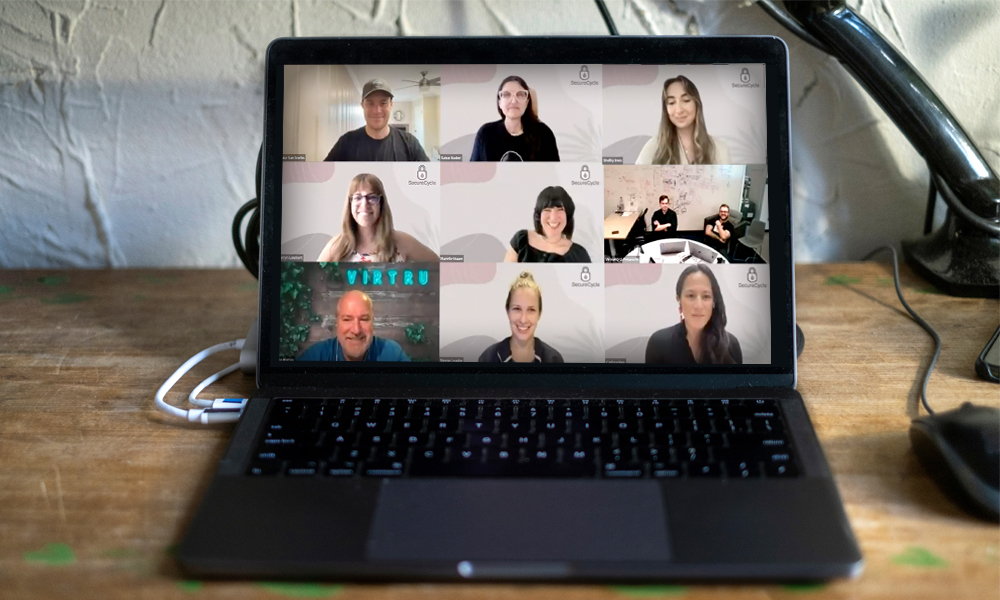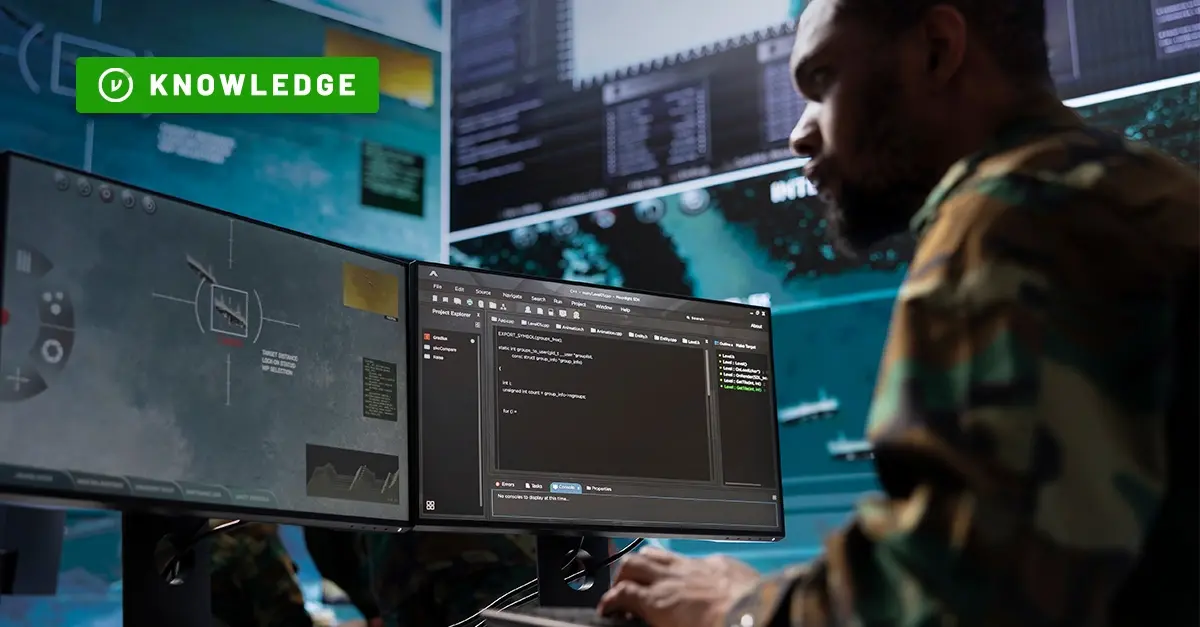How to Create a Successful Virtual Hackathon: Lessons from Virtru's InnoVation Week 2022


Since their inception in the late 90s, hackathons have evolved into interactive events where engineers, developers, programmers, or any innovation-oriented employees are given free reign to foster their creativity and intellectual pursuits. Also known as hack days, hackfests, datathons, codefests, broken windows, improvement days, or developer days, hackathons offer opportunities centered on sparking innovation that has lasting business impact.
The opportunity to build allows people to think big without limits and explore their imagination, often resulting in unprecedented products, services and “hacks.” For example, the Post-It was created during “15 percent time,” a program created by 3M that allows employees to focus on their own ideas. Google’s 20 percent time gave birth to Gmail, Google Earth, and Gmail Labs.
Virtual hackathons allow people within your organization to flex their creative muscles, giving them added energy and confidence. Virtual hackathons also produce projects that are both innoVative and sustainable, providing lasting benefits to your organization by taking a break from normal work routines.
Hackathons at Virtru
At Virtru, we host two hackathon-style events every year, a Hackathon in the winter and an InnoVation Week (IVW) in the summer. Hackathons at Virtru and beyond were typically held in person, until a sweeping pandemic forced companies to either get creative, or cancel the event.
At Virtru, we got creative.
This year from July 11-15, we hosted our third virtual InnoVation Week. InnoVation Week is a week-long event where our entire team is invited to submit proposals and join teams for projects they want to support. (In case you’re curious, the capital “V” in InnoVation Week is for Virtru.) Our experience gave us an opportunity to further analyze how we build virtual hackathons.
Originally, we considered hosting our third InnoVation week in person, but ultimately decided to keep the event virtual. Though initially viewed as a constraint, hosting this event remotely proved to be an added bonus. Team members with differing schedules used intersecting time slots to sync and prioritize the event. Rather than co-locate in one room that supported a limited amount of physical space, team members were afforded the opportunity to hop from company-wide meetings to intimate 1:1’s with a click of a button. Virtual reality built impossible interactions.
How to Build Your Own Virtual Hackathon
If you want to facilitate a virtual hackathon, you’ll have to be intentional about how you plan the event, and the tools that you use to facilitate it. Here’s how Virtru did it, and how you can do the same with your organization.
Planning
When planning, the main goal is to inspire directed innovation, or purpose-driven creativity. You want to give people the opportunity to explore without constraints. However, you also want that exploration to result in some value add, whether it be social, solving issues within your organization, or adding configurations to existing products and services. Directed innovation is sparked when an organization fosters collaboration and encourages cross-departmental diversity.
The Schedule: Fostering Collaboration through Asynchrony
When it comes to creating a virtual company-wide event, the biggest hurdle most organizations face is Zoom fatigue. Being on back-to-back video conferences can instill boredom, restlessness, and an overall lack of enthusiasm.
There’s no avoiding company-wide meetings during a hackathon, but the best philosophy for scheduling them is to be considerate. When scheduling our InnoVation Week, we overviewed individual schedules to eliminate over-booking. We also duplicated events to give everyone the opportunity to attend the sessions they wanted to, while still being able to get their essential work done.
As for breakout sessions throughout the week, we gave power to the people by allowing teams to meet asynchronously wherever and on whichever platform worked best. And rather than host obligatory team meals, we allowed everyone to expense their own meals. It is also helpful to allow people to form teams asynchronously before pitch day. We sent a company-wide email with the official IVW deck which gave people the chance to pitch their ideas and recruit members about 30 days in advance of the actual pitch day. On Pitch Day, some projects already had healthy amounts of participants.
R, R & R: Rest, Relaxation, and Reflection
When planning the schedule, it is also important to break the tedium of everyday routines to reset and refresh the brain.
After settling the logistical elements, we honed in on value-add to the participants. In addition to two full days of hacking, we provided educational development through Design Challenges and a “Wow, How, Now” elevator pitch contest. We also prioritized social events, like PizzaTime (a service that simultaneously delivers pizza to our U.S. teammates), a Zoom party with Dueling Pianos, and virtual happy hours to keep things fun. To highlight everyone's achievement, we gave awards to special projects, some of which will be implemented and indefinitely benefit our organization. Finally, because our hacking lasted two full days, we also prioritized rest and rejuvenation by implementing a day of ReViVal, giving our team the chance to catch up and recharge after such a full week.
Remember, hackathons are a time to do away with rigid structures. When planning your hackathon, don't be afraid to reevaluate the systems you’ve used to run previous hackathons. Exploring new territories and making mistakes is necessary if you want to grow and make progress.
Directed Innovation Through Departmental Diversity
Hacking is not just for engineers, but for everyone!
The departmental diversity of the planning committee played a huge role in creating directed innovation. Teams were well represented by their managers who served on the IVW planning committee; participants' needs were properly anticipated and everyone felt empowered to participate. The planning committee cultivated an environment of proven experience mixed with fresh ideas.
Everyone in the organization was invited to pitch ideas and rally support, not just engineers. There was space for everyone to participate in any capacity that best used their talents, skills and abilities. Engineers partnered with Marketing, Sales, CS, Product, Design, and other departments, speeding up processes that would normally take loads of time, because every department had a seat at the table to pull plans together quickly — and they had the dedicated time set aside to make their projects happen.
Because cross-departmental activities were fast tracked in real time, innovation happened almost instantaneously. These unique intersections sparked innovation! Within days, teams built apps, prototyped new features on existing software, and explored new opportunities. To emphasize that this event was open for everyone, we also included a No Code Award for innovation projects that didn't have any code or development involved. We’ve had hackathon projects focused on video production, process improvement, and DE&I initiatives. Teamwork that features departmental diversity also allows people to make new connections and learn new perspectives from across the organization.
The Tools
Some common criticisms about virtual events is that they can be impersonal and don’t allow seamless collaboration. However, the right tools can overcome these issues and even create more meaningful collaboration.
The Classics
We relied on staples like Slack and Gmail for communication, and Zoom for meetings. Our use of shared deck templates (Google Slides) for the demos created a sense of cohesiveness and made it easier for newcomers to venture into the unknowns of exploratory programming with confidence. We even used Google Forms to send surveys to gain feedback for our next hackathon.
In using the classic workplace tools, participation, cheerful dispositions, and enthusiasm truly do go a long way. Zoom meetings during Virtru’s InnoVation Week were especially awe-inspiring because people hyped that chat with a flood of comments.
New Tools like FigJam
InnoVation Week is an awesome opportunity to test new software and introduce new workflows, in a safe environment, exploring new ways to be more agile in the way we work together.
At Virtru, we used our hackathon to explore FigJam, a visual collaboration tool. Typically used in design spaces, FigJam is described as “an online whiteboard for teams to explore ideas together.” At Virtru, our teams used this tool to facilitate egalitarian collaboration. Our use of FigJam, which involved sharing a screen, writing down ideas, and real-time voting for favorite ideas, allowed everyone a fair chance at sharing their ideas. Including written forms of collaboration meant participants were less likely to be spoken over or silenced. Everyone could follow along to the movement of the board from their own browser, since collaboration happened live.
FigJam’s design capabilities allowed multiple hackathon teams to create storyboards using drawing functions; compile research with formatting tools and image upload; and gather product ideas using “sticky notes.” But really, FigJam can be used for any type of collaboration. Post-Virtru InnoVation Week, our User Experience and Marketing teams continue to use FigJam for collaboration, storyboarding, and product design. Trying out the new tech during InnoVation Week gave our teams the chance to explore new ways of working without slowing down larger company initiatives.
Get Your Hackathon On
Virtual hackathons offer real opportunities to advance a company's strategy. While having an already established remote culture might make it easier, it is still possible to carry out virtual hackathons without one. With the benefits of remote processes and tools, virtual hackathons offer opportunities to amplify value with less stress.
Virtual hackathons produce viable projects and ideas that solve issues within your company and beyond. Our yearly InnoVation Weeks and Hackathons are a time where we bring new ideas to life, and continue our purpose of making encryption accessible for everyone. If you’re attending DEF CON 30 in Las Vegas, don’t miss our demo of our new project stemming from InnoVation Week on Saturday, August 13, from 2-4 pm at Caesar’s Forum, Las Vegas in the Accord Boardroom.
So, now that you know how to create your own virtual hackathon by understanding the planning process and the tools we used during our event, what’s stopping you? Get out there and InnoVate!
See Virtru In Action
Sign Up for the Virtru Newsletter

/blog%20-%20marquis%20exploit/Marquise-Zero-Day.webp)
/blog%20-%20the%20data%20layer/geode.webp)

/blog%20-%20From%20Zero%20Trust%20Principles%20to%20Practice/dcs-principles.webp)

/blog%20-%20Zero%20Trust%20Primer%20-%20N5K%20series/Zero-Trust-Primer%20copy.webp)
/blog%20-%20Private%20Cloud%20Compute%20is%20Only%20Half%20the%20Story/PrivateCloudCompute.png)


